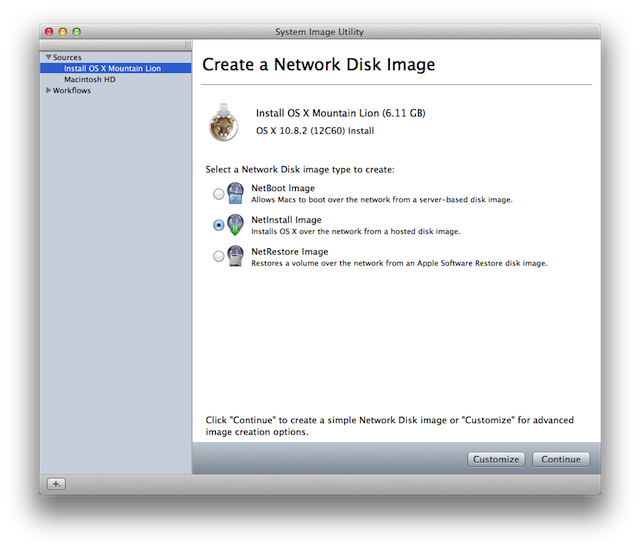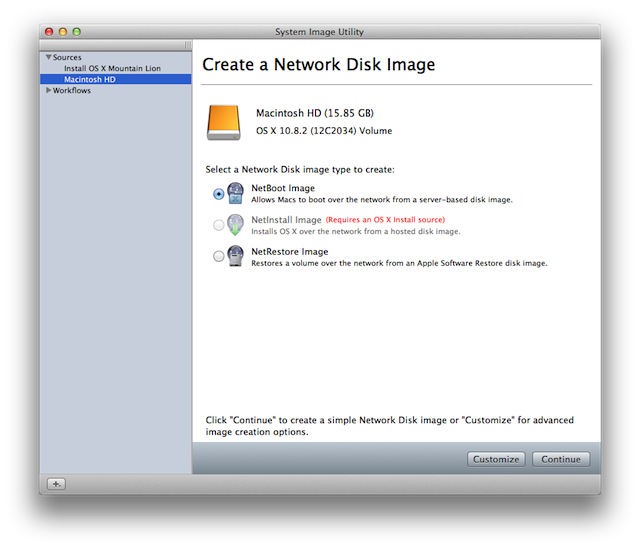OS X Server (Mountain Lion): Creating images for NetInstall, NetRestore, and NetBoot
You can install OS X over a network with OS X Server's NetInstall service using NetInstall or NetRestore images. You can also boot client systems over the network from a standardized installation of OS X using NetBoot images.
Learn how to create images that will support the hardware used by your client systems.
Macs ship with a specific version of OS X. You can view the version and build of the operating system using the steps in this article.
If the version and build of your Mac are later than the version and build of the operating system available from the Mac App Store, you must use the computer-specific build your Mac shipped with to create an image for that particular piece of hardware, by using these steps:
Optional: Start the client system into Internet Recovery mode and restore the operating system.
Optional: After restoring the client system’s software, you may create user accounts, install additional software, and make any other configuration changes you want your image to have.
Connect your client system to an admin system using target disk mode.
On the admin system, open System Image Utility from the /System/Library/CoreServices folder.
The client system’s drive will appear as a source in System Image Utility that can be used to create a NetRestore or NetBoot image. Select it and proceed with creating the image.
If your Mac shipped with a version and build which is earlier than the version and build of the operating system available from the Mac App Store, you can use the version from the Mac App Store to create an image which will work on your Mac by using the steps below:
Ensure that the client system meets the requirements for the version of OS X that you’ll be downloading from the Mac App Store.
On an admin system, log in to the Mac App Store and download the latest version of OS X available.
Open System Image Utility from the /System/Library/CoreServices folder.
The downloaded version of OS X will appear as a source in System Image Utility that can be used to create a NetInstall, NetRestore, or NetBoot image. Select it and proceed with creating the image.
Example
In the following example, OS X has been downloaded from the Mac App Store on an admin system, and a Mac mini (Late 2012) running the computer-specific build it shipped with has been connected via target disk mode. After opening System Image Utility on the admin system, both the Install OS X Mountain Lion app and the Mac mini’s volume appear as sources which can be used to create images. Note that the version of OS X installed by the Install OS X Mountain Lion app is v10.8.2 and the build is 12C60:

The version of OS X on the Mac mini’s volume is also 10.8.2, but the build is 12C2034:

Since 12C2034 is newer than 12C60, it would be necessary to create an image for other Mac mini (Late 2012) systems that shipped with build 12C2034 using the attached volume rather than the Install OS X Mountain Lion app. If the build available from the Mac App Store had been later than 12C2034, the Install OS X Mountain Lion app could have been used as a source in order to create images for systems shipping with build 12C2034.
Learn more
Be sure to only use either a volume containing an installation of OS X, or a version of OS X downloaded from the Mac App Store, as an image source in System Image Utility. Note: The InstallESD.dmg file should not be used directly when installing OS X or when creating an image as unexpected results can occur.